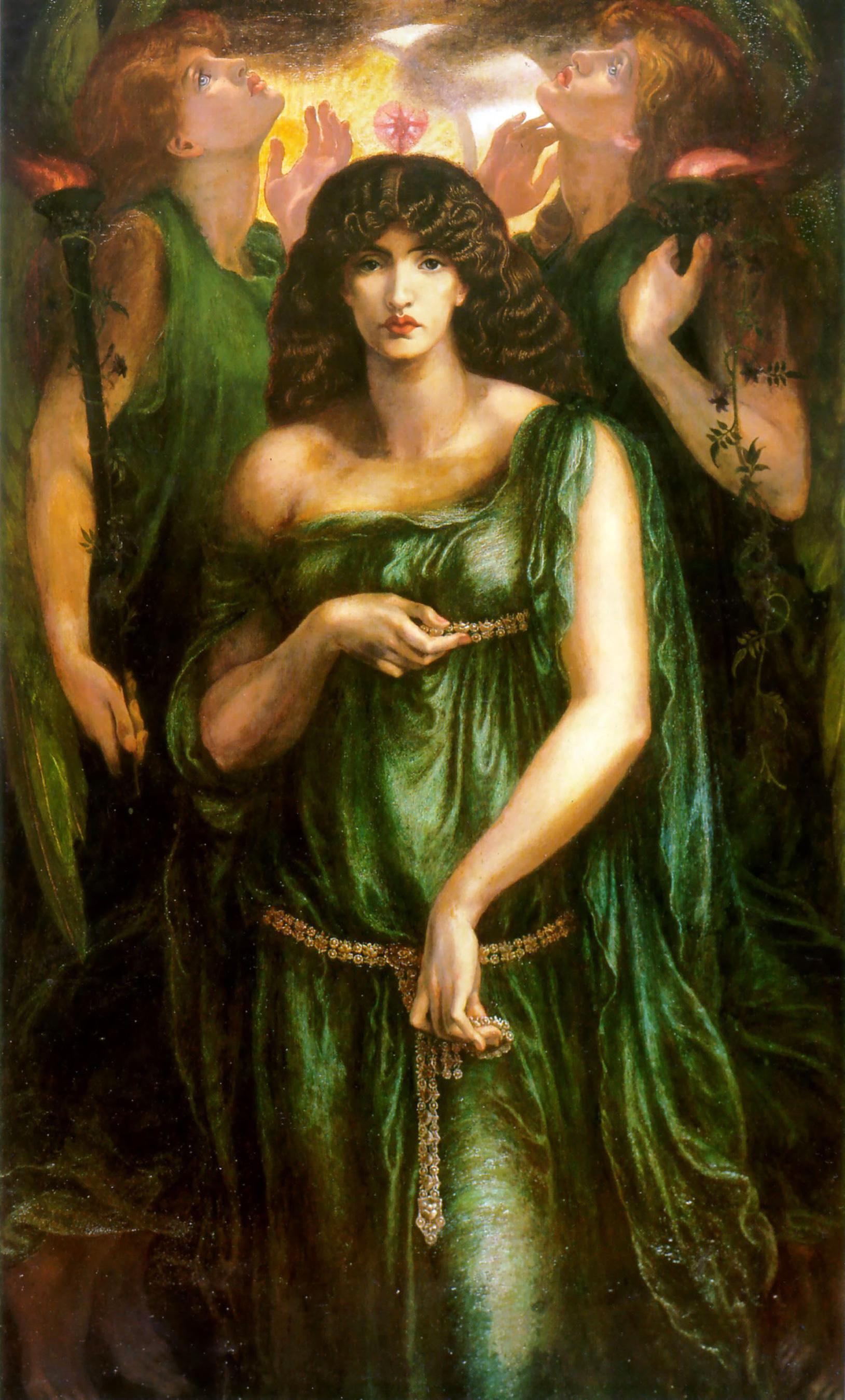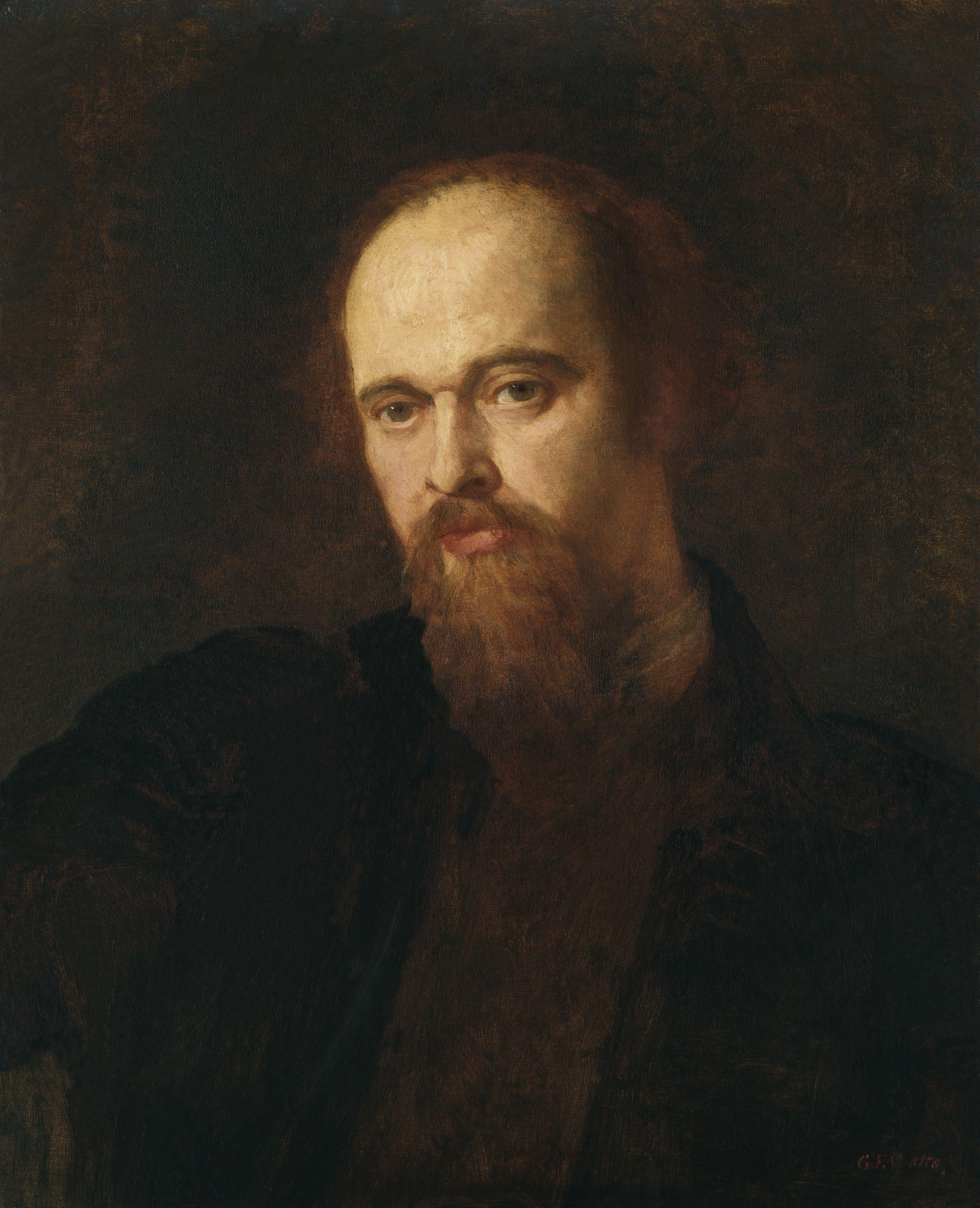One of the grandest and most elaborate portraits of Jane Morris created during the latter part of Rosetti's career, Astarte Syriaca epitomizes the ideal of the voluptuous, sensual woman as muse. After the death of his wife Elizabeth Siddall in 1862, Rosetti returned to the subject matter of the female figure with greater intensity and captured his models — including Jane Morris, his longtime model and mistress, as well as the wife of his close friend William Morris — with an obsessive sense of sensuality that heralded a new theme in his work.
Astarte, the goddess of war, love, and fertility in various Middle Eastern belief systems (where she was also known as Astoreth or Ishtar), was believed by Rosetti to be the more interesting and robust precursor to the Greeks' Aphrodite and the Romans' Venus, as he alludes to in the verse he composed to accompany this painting ("Mystery: lo! betwixt the Sun and Moon / Astarte of the Syrians: Venus Queen / Ere Aphrodite was"). Rosetti renders Jane as an icon of desire and sensual perfection in this painting. The figure's direct gaze, bare shoulder, and strong stance reveal the strength of her own sexuality. Behind her torch-bearing attendants (one of which was modeled by May Morris, Jane's daughter), a crescent moon represents her relation to the cosmos as well as the divine immortality of her womanly beauty. Rosetti's poetic allusion to the figure of the "woman clothed with sun" from the Book of Revelation 12:1 further makes clear his perception of the divine and cosmic power within the beauty of the female.
This painting, Venetian in style and thus reflective of Rosetti's multiculturalism, received contemporary criticism due to its strong, even disturbing, erotic content. Indicative of the nature of his relationship with Jane Morris, Rosetti's treatment of color and the feminine subject matter allocates a sense of melancholy within the work — a sentiment that divulges his own tragic love for Jane, the second great muse of his life.




Astarte Syriaca
oil on canvas • 185 x 109 cm
 Dante Gabriel Rossetti
Dante Gabriel Rossetti